-
A flat aluminum plate, about 5 cm x 8 cm, has slots cut out half-way through its long side. It has as a pendulum between the poles of a strong horse-shoe magnet. The plate can be set with the slotted side on its solid side on the magnetic field. When the continuous side hangs on the magnetic field, it does not swing — if released from any height, the plate stops quickly in the region of the magnetic field. However, if the plate is inverted and this slotted side is in the magnetic field region, the plate swings freely through the field.
It demonstrates the principle of an eddy current brake and conversely the effectiveness of laminated transformer cores for reduction of eddy currents.
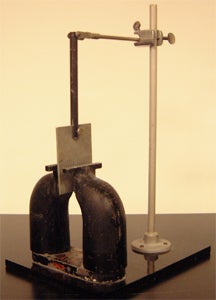
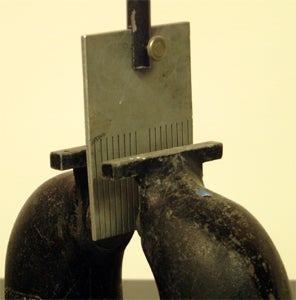
-
An empty soft drink can is placed upside-down on a stand, such that it is free to rotate. It is then set near to, but off of the side of, an electromagnet. The electromagnet is a large induction coil connected to an AC power supply. When the electromagnet is energized, the can spins. If the can is moved to the other side, it spins in the opposite direction.
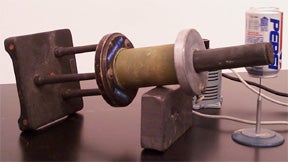
Click here to see a video of this demo.
-
The levitator consists of an electromagnet, a bank of capacitors and an aluminum plate. It is operated by an alternating current power supply.
The electromagnet is built with four concentric coils and a laminated iron core. The four coils are wound in the same sense and connected to the capacitor bank such that the resulting circuit is a parallel resonant circuit. The capacitor is large enough to bring the circuit into resonance. Two coils are connected in parallel and then in series with the capacitor. This part is then connected in parallel with the other two coils. A vertorial analysis of this circuit shows that the voltage across the coils connected in series with the capacitor leads the applied voltage by approximately 180°.
The coils and the capacitors’ banks are connected such that the magnetic fields induced have the space distribution that provides the needed stability for the aluminum plate.
The pole pieces of the laminated iron core reverse their polarity periodically with the alternating current in the coils. This changing magnetic field induces strong eddy currents in the aluminum pan sitting on top of the electromagnet. The eddy currents give rise to opposing magnetic fields, according to Lenz’s Law, and the pan is continually subject to an upward force in the central region of the magnet.

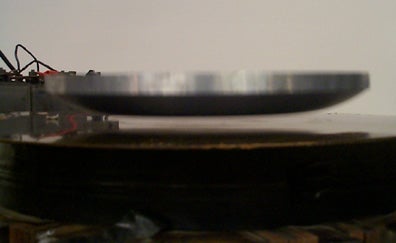
-
An aluminum tube and a clear plastic tube are used to demonstrate Lenz’s Law. A falling bullet-like magnet induces an electrical current in the aluminum tube, producing a counterforce on the magnet, causing it to fall slower than the other bullet in plastic tube when dropped simultaneously.
Dimensions:
Height: 91.5 cm
Diameter: 2.5 cm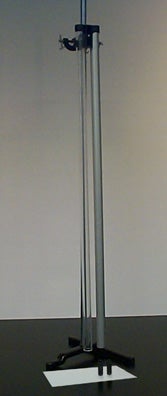
-
This experiment demonstrates eddy-current braking. A pendulum ending with a disk is made to oscillate between the poles of an electromagnet. Eddy currents are induced in the disk as it moves through the non-uniform magnetic field. This field exerts a force on the currents, opposing their motion and resulting in a damping of the oscillations. The effect is diminished when the slotted side of the disk goes through the field as the slots make it harder for eddy currents to form.
Note: the damping effect might not be obvious when visualizing only one case. It is then necessary to keep track of the number of oscillations and compare the two cases (with and without slots).

Click here to see a video of this demo.
-
This demonstration shows the effects of eddy currents as a magnet is rolled down various plates. These are 5 plates (copper, aluminum, brass, steel and plastic) are mounted on a plexi construction with an adjustable stand.
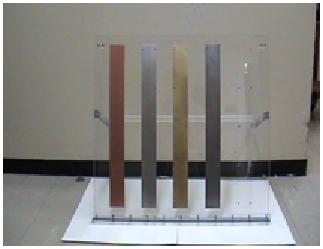
Click here to see a video of this demo.
-
An eddy current brake, like a conventional friction brake, is a device used to slow or stop a moving object by dissipating its kinetic energy as heat. However, unlike electro-mechanical brakes, in which the drag force used to stop the moving object is provided by friction between two surfaces pressed together, the drag force in an eddy current brake is an electromagnetic force between a magnet and a nearby conductive object in relative motion, due to eddy currents induced in the conductor through electromagnetic induction.
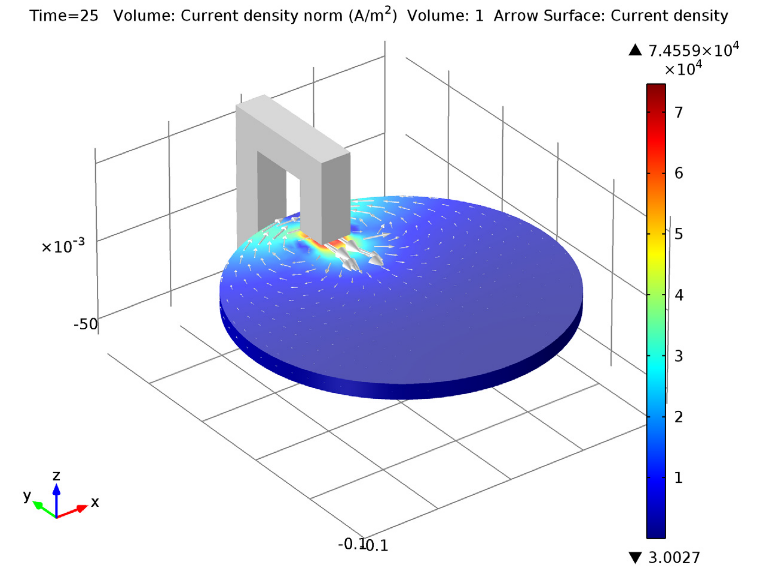


Eddy Current
Contact our lab
Visit Us
USC Physics Lecture Support Lab SLH (Stauffer Lecture Hall) – 104
Department of Physics and Astronomy
University of Southern California
Los Angeles
Questions or Comments
If you have questions or comments e-mail us or call at phone number below.